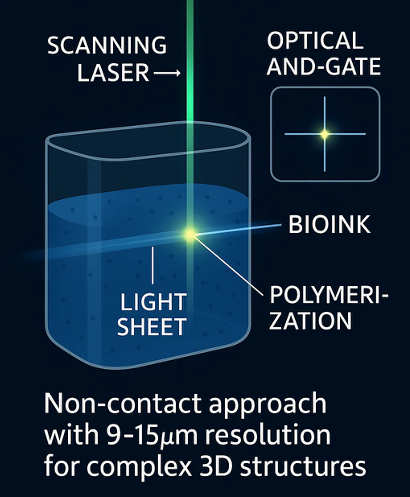Our Technology

Transforming 3D bioprinting with proven optics innovation
LUMINATE is our novel 3D bioprinter developed at the Goethe University as part of a Horizon 2020 consortium. Our technology allows a voxel by voxel print based on the principle of light sheet imaging.
We can print, but we can also image in real-time thanks to our in-line light sheet and phase contrast microscopes. This allows us to have control over the material, the cells and the print - harnessing the full power of 3D bioprinting for even more complexity.
High precision printing of live material
LUMINATE allows a free-floating print with 9μm resolution and >90% cell viability, and this in a few minutes. Suitable for complex geometries that match the physiology of your patients.
Scalable, standardized close-loop platform
Compatible with industry-standard formats for a seamless integration into existing workflows. No manual handling of samples – ensuring reproducibility and minimizing contamination.
AI-Driven Automation
This is not science fiction.





